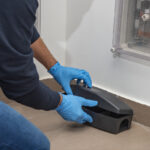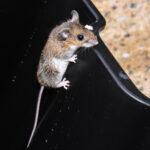Problems With Mice
In Billinge?
Professional Mice Control In Billinge
Need Help? Call Us On 0161 776 9832 For Expert Pest Control Advice On How To Identify Pest Infestations And Help Solve Your Pest Problem.
Youngs Pest Control
Need Help? Call Us On 0161 776 9832 For Expert Pest Control Advice On How To Identify Pest Infestations And Help Solve Your Pest Problem.
24 HOUR EMERGENCY RESPONSE
FAST RESPONSE
OVER 20 YEARS OF EXPERIENCE
PROFESSIONAL & SPECIALIST QUALIFICATIONS
NPTA MEMBER
DISCREET, UNMARKED VANS
DOMESTIC, COMMERCIAL & AGRICULTURAL
TREATMENT OF ALL TYPES OF PESTS
FAMILY RUN BUSINESS
FULLY QUALIFIED
Pest Control For Mice In Billinge
Why Choose Us
Searching for a reliable mouse control specialist in Billinge? You've come to the right place! Here at Youngs Pest  Control, we understand the frustration and concern that can come with having these unwanted guests in your home or business. That's why we offer professional and thorough pest control services to ensure that your property is free from mice. From commercial to residential areas, we have the knowledge and expertise to tackle any infestation.
Control, we understand the frustration and concern that can come with having these unwanted guests in your home or business. That's why we offer professional and thorough pest control services to ensure that your property is free from mice. From commercial to residential areas, we have the knowledge and expertise to tackle any infestation.
With over 20 years of experience, our professional and specialist qualifications make us the top choice for effective mouse control. As members of the NPTA, we are committed to providing fast and reliable service, available 24/7. Our fully qualified team operates with discretion in unmarked vans, ensuring a discreet and efficient solution to your pest control needs. Trust us for all your pest control needs.
Common Areas We Treat
 Attics and Loft Spaces
Attics and Loft Spaces
Attics and loft spaces are prime locations for mice infestations due to their abundance of nesting materials. Mice are attracted to these areas because they provide a warm and secluded environment for them to build their nests and raise their young. We offer mice control solutions specifically designed to eliminate these unwanted pests from your property.
 Basements and Cellars
Basements and Cellars
Basements and cellars are another common area for mice infestations, as they provide ample hiding places and nesting areas. Our professionals are equipped to eradicate these rodents safely and efficiently.
What to Expect
 After inspecting your property and creating a customised treatment plan, our team will begin the pest control application process for mice in Billinge. Our experienced technicians will implement effective mice control treatments to eliminate the infestation. We will carefully apply safe and targeted measures to ensure the eradication of mice while minimising any potential risks to you and your property. Our goal is to provide comprehensive pest control for mice, delivering outstanding results and peace of mind.
After inspecting your property and creating a customised treatment plan, our team will begin the pest control application process for mice in Billinge. Our experienced technicians will implement effective mice control treatments to eliminate the infestation. We will carefully apply safe and targeted measures to ensure the eradication of mice while minimising any potential risks to you and your property. Our goal is to provide comprehensive pest control for mice, delivering outstanding results and peace of mind.
Pest Control for Mice in Commercial and Residential Areas
Residential
Mice infestations can disturb daily living, posing health risks and causing structural damage. They can gnaw through wires, insulation, and even walls. In Billinge, we provide our services for all types of homes, including flats, detached and semi-detached houses, and terraced homes.
wires, insulation, and even walls. In Billinge, we provide our services for all types of homes, including flats, detached and semi-detached houses, and terraced homes.
Businesses
Mice infestations can be particularly detrimental to businesses such as restaurants, warehouses, food production outlets, and shops. Irregular mice control treatments can lead to damage to products, contamination, and a negative impact on a business's reputation. Our professional and thorough mice control services to ensure that businesses can operate without the risk of mice infestations.
Youngs Pest Control is your Local Expert for Mouse Problems in Billinge.
Here at Youngs Pest Control, we are experienced in effectively handling mice infestations in Billinge through our expertise and knowledge of pest control methods. We pride ourselves on being experts in mice control, providing reliable and efficient services to our customers. Our pest controllers are trained to identify the root cause of the infestation and implement strategies to eliminate the problem effectively.
We also service Neighboring areas like:
Wigan
Rainford
Orrell
WN5
Do Mice cause damage?
These tiny pests have sharp teeth that they use to chew through various materials, including wood, insulation, and electrical wiring. This can lead to structural damage, electrical issues, and even fire hazards.
Do Mice affect your health?
 Mice can carry a number of illnesses, which can be spread via their urine, droppings, or saliva. Their droppings and urine contain allergens that can exacerbate allergic reactions and asthma symptoms, especially in individuals with pre-existing respiratory conditions. Mice are known to contaminate surfaces and food with their faeces, urine, and hair, posing a risk of foodborne sicknesses such as salmonella and E. coli. Dealing with a mouse issue can cause significant stress and anxiety, affecting mental health and overall well-being.
Mice can carry a number of illnesses, which can be spread via their urine, droppings, or saliva. Their droppings and urine contain allergens that can exacerbate allergic reactions and asthma symptoms, especially in individuals with pre-existing respiratory conditions. Mice are known to contaminate surfaces and food with their faeces, urine, and hair, posing a risk of foodborne sicknesses such as salmonella and E. coli. Dealing with a mouse issue can cause significant stress and anxiety, affecting mental health and overall well-being.
Here at Youngs Pest Control, we acknowledge the stress and frustration that comes along with a mouse infestation. Our expert team in Billinge is here to provide you with efficient and effective pest control solutions. We take pleasure in our detailed approach, ensuring that all common areas are treated to eliminate mice from both commercial and residential properties. Don't let mice cause damage or affect your health any longer – trust the local experts to take care of your infestation today.
Frequently Asked Questions
Can mice squeeze through small openings?
- Yes, mice can fit through openings as small as a dime, making it crucial to seal all potential entry points.
What do mouse nests look like?
- Mouse nests are often made from shredded paper, fabric, and other soft materials hidden in secluded areas.
Can a clean house still have a mouse problem?
- Yes, even clean homes can have mouse issues. Mice are lured to warmth and can enter through small openings.


